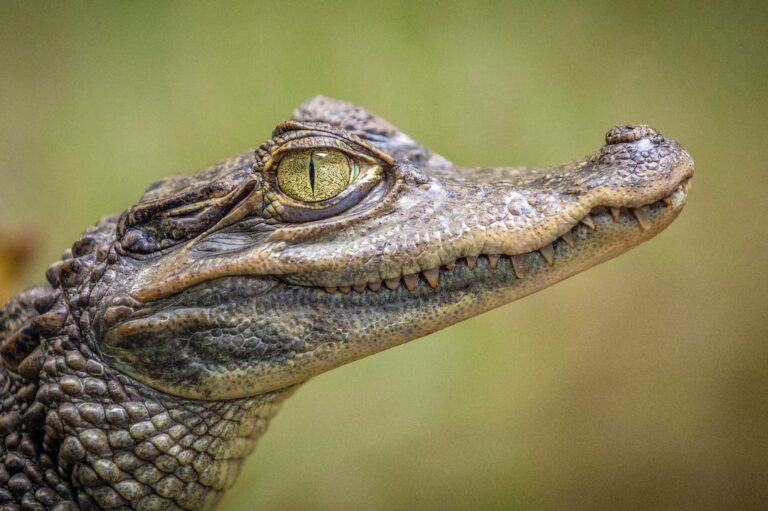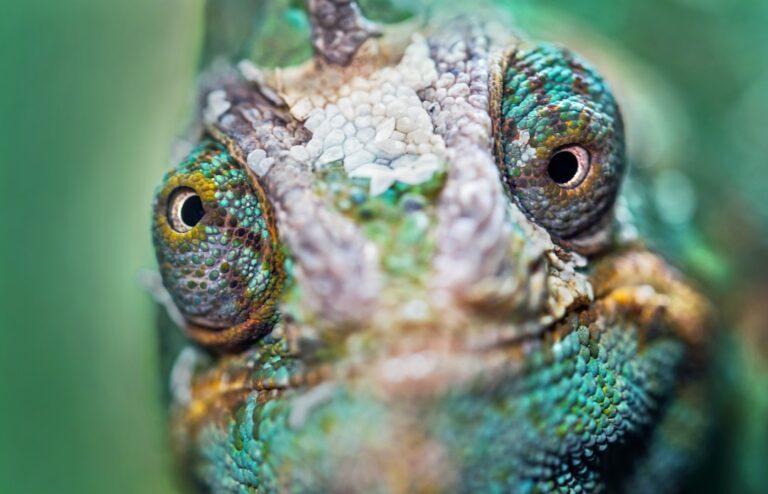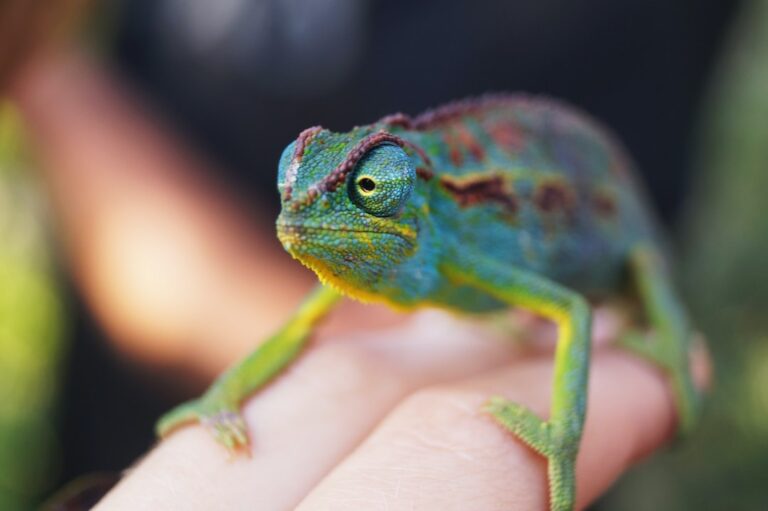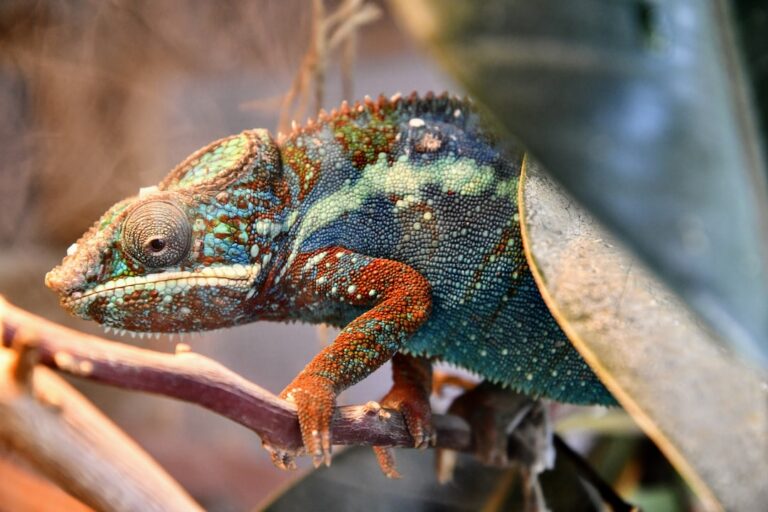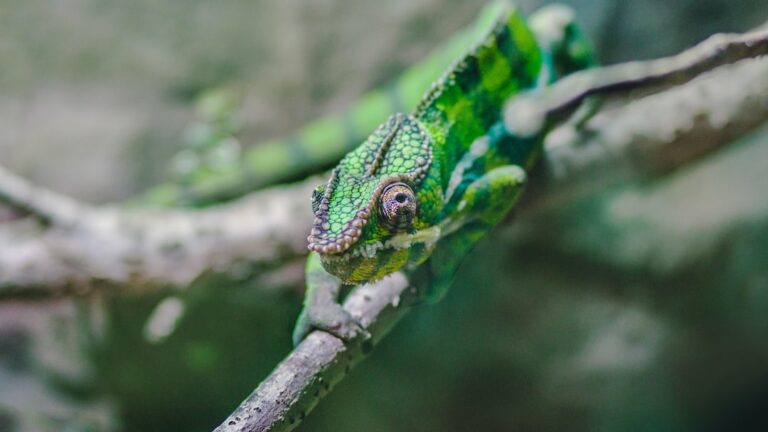Do Chameleons Eat Leaves?
Chameleons are fascinating creatures known for their ability to change color and blend into their surroundings. They are reptiles that belong to the family Chamaeleonidae and are native to Africa, Madagascar, and parts of Asia and Europe. Chameleons have unique characteristics that set them apart from other reptiles, such as their independently moving eyes, long tongues, and prehensile tails.
A balanced diet is crucial for the health and well-being of chameleons. Like all animals, chameleons require a variety of nutrients to thrive. A diet that lacks essential nutrients can lead to various health problems and even death. It is important for chameleon owners to understand the dietary needs of these reptiles and provide them with a suitable diet.
Table of Contents
Understanding the Importance of Diet for Chameleons
Diet plays a vital role in the overall health and well-being of chameleons. A balanced diet provides the necessary nutrients for growth, reproduction, and maintaining a healthy immune system. Without a proper diet, chameleons can suffer from malnutrition, weakened immune systems, stunted growth, and other health issues.
An imbalanced diet can have serious consequences for chameleons. For example, a diet that is too high in fat can lead to obesity and liver disease. On the other hand, a diet that is too low in calcium can result in metabolic bone disease, which causes weak bones and deformities. It is essential for chameleon owners to provide a varied diet that meets all of their nutritional needs.
Types of Food Chameleons Eat in the Wild
In the wild, chameleons primarily feed on insects and other small prey. Their diet consists mainly of crickets, grasshoppers, flies, moths, beetles, and spiders. They use their long, sticky tongues to catch their prey, which they then consume whole. Chameleons are also known to eat small birds and lizards on occasion.
Chameleons are opportunistic feeders, meaning they will eat whatever prey is available to them. They have excellent eyesight and can spot insects from a distance. They are also able to accurately judge the distance and trajectory of their prey, allowing them to catch it with their tongues.
Do Chameleons Eat Leaves? Exploring Their Feeding Habits
While chameleons primarily feed on insects and other small prey, they do occasionally eat leaves. However, leaves are not a significant part of their diet. Chameleons are not herbivores and do not rely on plant matter for their nutritional needs. Their bodies are not designed to efficiently digest plant material.
Chameleons may occasionally nibble on leaves for hydration or to obtain certain nutrients that may be lacking in their diet. However, leaves should not make up a significant portion of their diet. It is important for chameleon owners to provide a varied diet that includes a variety of insects and other prey.
The Role of Leaves in Chameleon’s Diet
While leaves may not be a primary food source for chameleons, they do play a role in their diet. Leaves provide certain nutrients that may be beneficial for chameleons. They contain fiber, vitamins, and minerals that can contribute to overall health and well-being.
Incorporating leaves into a chameleon’s diet can help provide additional hydration and variety. It is important to note that not all leaves are safe for chameleons to consume. Some leaves may be toxic or indigestible for these reptiles. It is crucial for chameleon owners to research and provide safe and beneficial leaves for their pets.
Nutritional Value of Leaves for Chameleons
Leaves provide a variety of nutrients that can benefit chameleons. They are a good source of fiber, which aids in digestion and helps prevent constipation. Leaves also contain vitamins, such as vitamin A and vitamin C, which are essential for maintaining a healthy immune system and promoting overall health.
In addition, leaves provide minerals like calcium and potassium, which are important for bone health and muscle function. Chameleons require adequate amounts of calcium to prevent metabolic bone disease, a condition that can lead to weak bones and deformities. Incorporating leaves into their diet can help ensure they receive the necessary calcium and other minerals.
How to Incorporate Leaves in Chameleon’s Diet
When incorporating leaves into a chameleon’s diet, it is important to choose safe and beneficial options. Some safe leaves for chameleons include hibiscus leaves, mulberry leaves, grape leaves, and dandelion greens. These leaves are readily available and provide a variety of nutrients.
It is important to thoroughly wash the leaves before offering them to your chameleon to remove any pesticides or contaminants. Leaves should be offered in small quantities and should not replace the primary diet of insects and other prey. Chameleons may nibble on the leaves or use them for hydration, but they should not rely on them as a primary food source.
Common Mistakes to Avoid When Feeding Chameleons Leaves
One common mistake that chameleon owners make when feeding leaves is offering toxic or indigestible varieties. Some plants are toxic to chameleons and can cause serious health issues or even death. It is crucial to research and provide safe options for your chameleon.
Another mistake is overfeeding or relying too heavily on leaves as a food source. Chameleons require a varied diet that includes a variety of insects and other prey. While leaves can provide certain nutrients, they should not replace the primary diet of insects. It is important to strike a balance and provide a well-rounded diet for your chameleon.
Signs of Overfeeding or Underfeeding Chameleons
Overfeeding or underfeeding chameleons can have serious consequences for their health. Signs of overfeeding include obesity, lethargy, and a decrease in activity levels. Overfed chameleons may also have difficulty shedding their skin and may develop fatty deposits on their bodies.
On the other hand, signs of underfeeding include weight loss, decreased appetite, and lethargy. Underfed chameleons may also have weakened immune systems and be more susceptible to infections and diseases. It is important to monitor your chameleon’s weight and behavior to ensure they are receiving an adequate diet.
The Importance of a Balanced Diet for Chameleons
In conclusion, a balanced diet is crucial for the health and well-being of chameleons. While they primarily feed on insects and other small prey, leaves can play a role in their diet by providing additional hydration and certain nutrients. However, leaves should not replace the primary diet of insects.
Chameleon owners should research and provide safe and beneficial leaves for their pets. It is important to avoid common mistakes such as offering toxic or indigestible varieties or relying too heavily on leaves as a food source. By providing a varied diet that meets all of their nutritional needs, chameleon owners can ensure the health and longevity of their pets.
If you’re curious about the eating habits of chameleons, you might also be interested in learning about their ability to blink. Chameleons have a unique way of blinking that sets them apart from other reptiles. To find out more about why chameleons blink and how it benefits them, check out this informative article on reptilefriend.com.


